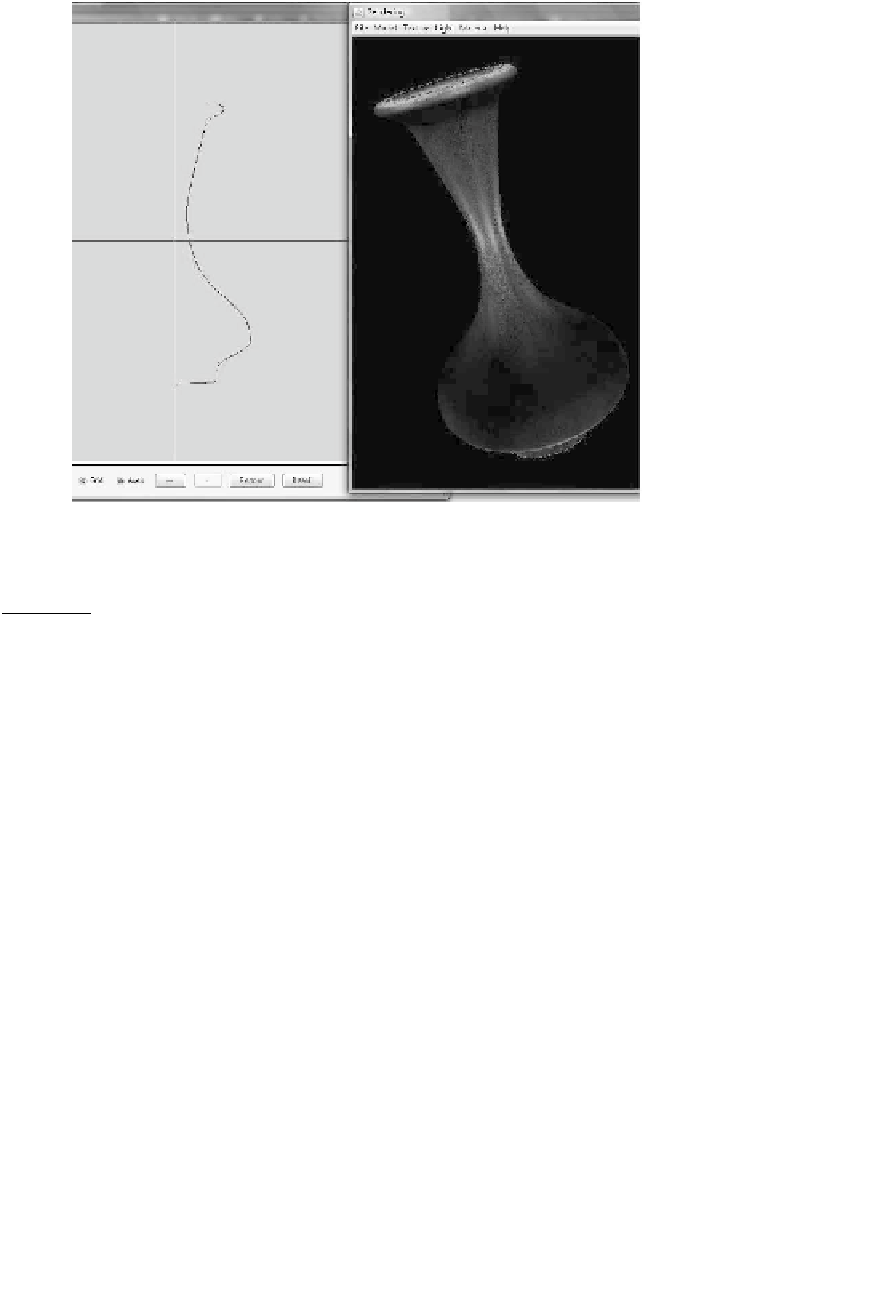Image Processing Reference
In-Depth Information
FIGURE 7.7: A snapshot of a part of the algorithm in action: The digi-
tal generatrix (shown in the left pane) and the corresponding digital surface
resembling a flowerpot generated in the right pane. (See color insert.)
Reprinted from
International Journal of Arts and Technology
,
4
: 196-215, G. Kumar et al., Copyright 2011, with
permission from Inderscience Publishers.
modeling technique proposed in [90], a simple teapot consists of 9244 polygons.
The voxel data is converted to a polygonal surface using a marching-cubes
algorithm. Although the technique is appropriate for modeling a boulder or a
tooth, it cannot not create an exact surface of revolution such as a crankshaft
or a pottery, since the circular property of the pottery is not utilized. Texture
can be applied readily, but storing the object requires more memory.
Finite Element Method: This is the naive approach for representing any 3-
D object [96]. The entire volume of the object is composed from cubes of small
dimension. The shape is modified by eroding/depositing the finite elements
using a suitable interface. Too many points are required for good resolution,
which have to stored explicitly, thereby requiring large memory. The circular
property of potteries is not utilized at all.
Cylindrical Element Method: The entire pottery volume of a deformable
object is discretized with a set of thin cylinders for its boundary representation
as described in [96]. Shape control is performed using collision detection be-
tween the Haptic Interface Point (HIP) and the virtual pottery. The drawback







